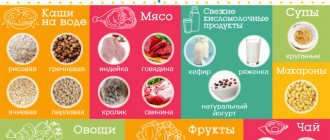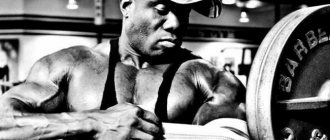It is logical to believe that an ordinary person does some exercises up to the age of 50, and the day after his 50th birthday begins to do others - special exercises.
But in life it’s not like in logic. In life, an ordinary person tries himself in different exercises, never stopping at any for long.
Having not really learned anything, at the age of 50 he asks the question: what exercises do I need now to make everything go well?
Create a training plan after 50 years of age for free
Power loads
After 50 years, Physical Performance Across the Adult Life Span: Correlates With Age and Physical Activity muscle strength and endurance decreases: a person loses an Age-related decrease in physical activity and functional fitness among elderly men and women about 12–14% of muscle mass per decade. Bones become less dense, increasing the risk of fractures and osteoporosis, especially in women Muscle and Bone Mass Loss in the Elderly Population: Advances in diagnosis and treatment - due to hormonal changes associated with menopause. And regular strength training is the best way. The impact of sarcopenia and exercise training on skeletal muscle satellite cells. protect muscles and bones.
Strength exercises can be divided into two types: isolated and basic. Isolated ones pump up only one muscle group, basic ones use several at once.
For example, curling the arm with dumbbells uses one joint - the elbow, and is aimed only at pumping the biceps. This is an isolated exercise. And pulling up involves both the elbow and shoulder joints, and involves the latissimus dorsi, biceps, trapezius, deltoids and other muscles. This exercise is basic.
Evgeniy Bogachev
Strength and conditioning expert, director of the Evotraining educational project.
Isolated training on machines does not improve coordination and balance. Therefore, when choosing exercises, it is better to give preference to basic movement patterns.
Bogachev explains that all basic movements are found not only in the gym, but also in everyday life. By strengthening your muscles through free weight training, you will tone your entire body evenly and reduce the risk of injury in everyday life. Here are some exercises you can include in your program.
Squats
This exercise develops strength in the legs and back. In any type of squats, it is important to follow the correct technique: keep your back straight, do not round your lower back, do not lift your heels off the floor and do not turn your knees inward.
Deadlift
Strengthens the muscles that stabilize the spine and the back of the thigh. As with the squat, it's important not to round your lower back—keep your back flat at every point in the exercise. It's also important to hold the bar or dumbbells close to your shins to reduce stress on your lower back.
Presses and push-ups
Such exercises strengthen the muscles of the chest and back of the arms. In the gym you can do presses with barbells and dumbbells, or at home you can try different types of push-ups.
Rows and pull-ups
Strengthens the back, shoulders and biceps. In any pulling exercise, in the starting position you need to lower your shoulders and squeeze your shoulder blades together: imagine that an orange is sandwiched between them. If you are doing rows, make sure your torso is parallel to the floor throughout the exercise.
Lunges and Steps
Such movements pump up the muscles of the legs and core, and improve the sense of balance. Before you pick up a barbell and dumbbells, try lunges without weight. Make sure that during the lunge the knee does not go too far beyond the toe and does not turn inward during the rise. If you find it difficult to maintain balance while lunging forward or walking around the gym, try taking a step back and coming back.
Folds and twists on the press
Such exercises pump up the abdominal muscles, which are involved in almost any movement and provide stability and a good sense of balance.
All such exercises pump up the abs, but movements in which you lift the body with fixed legs emphasize the upper part of the rectus abdominis muscle, and where you lift the legs - the lower part and the muscles that flex the hip.
How to do the exercises
- Pump your entire body evenly. Select one strength exercise from each of the basic movements above and perform it in one workout. Change the exercises every session.
- Perform the movements through the full range. In other words, you need to squat and lean forward as deeply as you can control the stability of your lower back and hips.
Evgeniy Bogachev
The range of motion in the joints is the key to their health, since during movement the articular surfaces are washed and nourished by intra-articular synovial fluid.
- Work out with a trainer. The study Motivational characteristics and resistance training in older adults: A randomized controlled trial and 1-year follow-up showed that middle-aged people are more motivated not by results, but by knowledge of how and what they do. Classes with an experienced trainer will make your training more meaningful, help you learn movement techniques and enter the sport without injury or lack of motivation. If you decide to exercise on your own, carefully choose exercises and free weights, focus on how your body feels: do not train through pain, give yourself enough rest to recover.
- Exercise regularly. This is important for lasting positive change. Do strength training two, maximum three times a week. The rest of your time can be devoted to developing general endurance.
Training after 40 years
When a man's age crosses the forty-year mark, some changes begin in his body. Thus, the level of testosterone synthesis drops significantly, and this entails a deterioration in muscle tone and general physical condition. A man’s sleep deteriorates and his performance decreases, and his metabolism slows down, as a result of which the body begins to store fat more actively.
Dumbbell gymnastics for men after 40 years of age is aimed at restoring proper hormonal levels and improving overall health. It normalizes the functioning of all organ systems, especially the cardiovascular system. Systematic exercises with dumbbells are guaranteed to increase the length and quality of life of every man, regardless of age.
Cardio loads
Decline in VO2max decreases with age with aging in master athletes and sedentary men., A comparison of longitudinal changes in aerobic fitness in older endurance athletes and sedentary men. general endurance, so that you become short of breath even from the simplest movements, and your heart and lungs no longer work so well. Regular cardio loads slow down this decline by two or more times, increase endurance, protect against heart and vascular diseases, and even reduce Postponed development of disability in elderly runners: a 13-year longitudinal study. risk of death.
The word "cardio" often refers to running, but it is not the only option for developing overall endurance. Bogachev advises choosing exercises without impact on the joints: Nordic walking, skiing, rowing, ergometer pedaling, swimming.
Evgeniy Bogachev
To maintain a high quality of life, two workouts per week are enough.
How intense should you exercise?
There are two options: monitor your heart rate or train by feeling. If you choose the first, make sure that your heart rate does not rise above 160 beats per minute during training. You can see the exact values of the aerobic zone here.
Keep in mind that many fitness bracelets incorrectly display your heart rate, overestimating it by 10–20 beats per minute. Devices with chest sensors display your heart rate as accurately as possible. But it’s much easier to navigate by sensations.
Evgeniy Bogachev
If you can carry on a conversation while moving, the intensity is chosen correctly.
As your fitness level increases, you will be able to exercise more intensely without harm. Impact of age, performance and athletic event on injury rates in master athletics - first results from an ongoing prospective study. for health, but you should start gradually. Follow your feelings and take your time.
The benefits of gymnastics at home in the morning for young and old
Charging has a beneficial effect on the performance of all systems and organs. Let's take a closer look at all the positive properties of physical exercise performed in the morning:
- Strengthening the muscle corset and straightening the posture, which generally has a beneficial effect on a person’s appearance. It will not be possible to achieve sculpted muscles with just one exercise, but it is possible to give a more stable position to the vertebrae and prevent the occurrence of diseases of the musculoskeletal system.
- Strengthening the cardiovascular system. Physical activity in the morning will prevent the occurrence of a number of cardiovascular diseases (vascular atherosclerosis, coronary heart disease, etc.). Also, exercise improves blood circulation in all organs and their systems.
- Stimulates metabolism and improves morale. When performing physical exercises accompanied by pleasant music, the body produces a hormone called endorphin (or the hormone of happiness).
Interesting fact! It has been clinically proven that people who regularly exercise are less prone to depression and other mental disorders.
Exercises to develop and maintain flexibility
Basic full-range strength movements help maintain and develop flexibility, but if you want to further improve this quality, try special mobility exercises: stretching and rolling on massage rollers.
Passive stretching
Perform these exercises at the end of a strength or cardio workout as a cool-down. Hold each pose for at least 1-2 minutes. Don’t get yourself ready for feats - the tension should be moderate, without severe pain.
The best programs for any age at home
For example, jumping rope, active body bends to the sides, lunges with feet forward are not suitable for people suffering from diseases of the musculoskeletal system and the cardiovascular system.
Up to 30 years old
The complex for men under 30 years of age should include the basic exercises presented earlier. They are considered as preparation for other types of exercises, which are more complex in technique and require certain strength expenditures.
The list of additional loads for young people includes:
- Plank. During the training, the body weight is transferred to the elbows and feet. Stay in this position for 1-1.5 minutes. For trained men, you can complicate the exercise, for example, lean on your hands and one foot or feet and one hand.
- Pull-ups on the bar with wide arms. Pull-ups will strengthen the muscles of the upper body and make your figure more prominent. Do 5 pull-ups at a time for 3 repetitions.
- Leg lunges with weights. The number of repetitions is 35 times for each leg.
- Push-ups – 10 times in 2 sets. As you prepare, the exercise also becomes more difficult.
If a young man is in good physical shape, then a basic set of exercises (side and forward bends, squats, crunches) can be performed using dumbbells or water bottles as a weighting agent.
Up to 40 years old
Men under 40 years of age can also adhere to the basic, previously presented complex. However, at this age you need to be more careful with weights. People with poor physical fitness should not use dumbbells at first.











